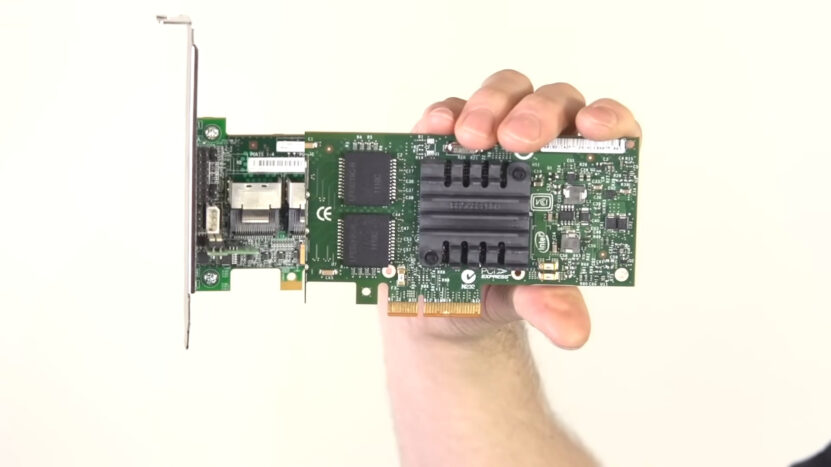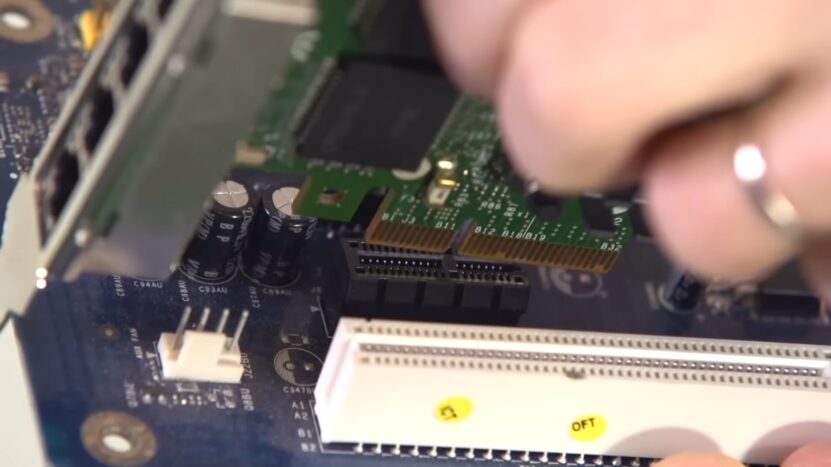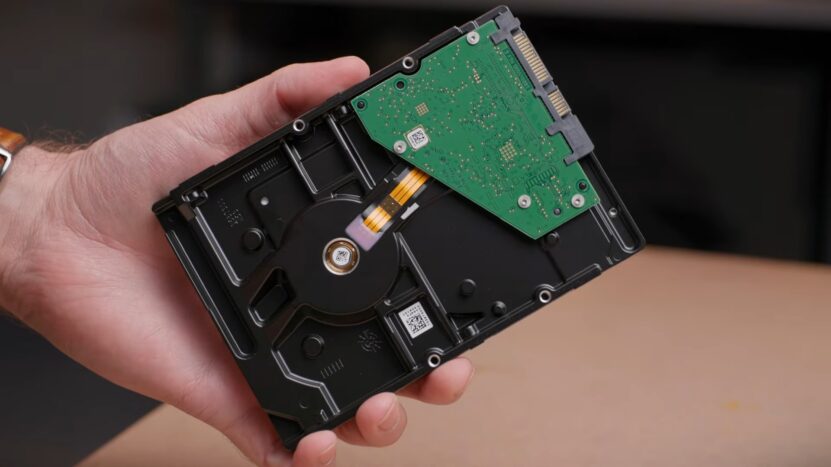The evolution from PCIe 2.0 to 3.0 marks a significant step forward. This transition leads to higher performance and efficiency, critical for high-speed data transfer in modern PCs.
Key elements such as graphics cards and SSDs benefit immensely from this upgrade, experiencing improvements in bandwidth and transfer rates. Additionally, the adoption of more efficient encoding methods contributes to better power management.
However, the fact is that a lot of people don’t know much about the differences between versions 2.0 and 3.0. I will share some important features that will help you tell these two models apart.
Key Takeaways
The transition from PCIe 2.0 to 3.0 significantly increases performance and efficiency, particularly benefiting high-speed data transfer elements like graphics cards and SSDs through improvements in bandwidth and transfer rates.
PCIe 3.0 offers enhanced encoding methods, resulting in better power management and a doubling of the bandwidth per lane from 500 MB/s to 1 GB/s, alongside a more efficient encoding method, shifting from 8B/10B to 128B/130B, which contributes to higher overall efficiency and performance.
While PCIe 3.0 presents considerable advancements in speed and power efficiency, PCIe 2.0 maintains relevance due to its compatibility and cost-effectiveness, serving adequately for tasks with moderate performance demands and providing a practical upgrade path with backward compatibility.
What Are the Key Differences?
| Feature | PCIe 2.0 | PCIe 3.0 |
|---|---|---|
| Max Data Transfer Rate | 5 GT/s | 8 GT/s |
| Encoding | 8B/10B | 128B/130B |
| Bandwidth per Lane | 500 MB/s | 1 GB/s |
| Power Efficiency | Lower | Higher |
| Impact on Applications | Basic Compatibility | Enhanced Performance |
When examining the shift from the earlier generation to PCIe 3.0, several key areas stand out. The primary distinction lies in the bandwidth capability.
The newer version doubles the bandwidth per lane, providing 8 GT/s compared to the 5 GT/s of its predecessor. This increase is significant for users requiring high-speed data transmission, particularly in areas like gaming, where faster and more efficient data movement can translate to better performance.
Another notable difference is the encoding scheme. PCIe 3.0 utilizes 128B/130B encoding, a more efficient method than the 8B/10B encoding used in the previous version. This change improves the net data rate, leading to higher overall efficiency and better performance for end-users.
This efficiency is not just in terms of speed; it also means that the newer version is more power-efficient, a crucial consideration in today’s energy-conscious world. Using a lower version card in a higher version slot, or vice versa can result in reduced performance due to the bottlenecking of data transfer rates.
It is, therefore, essential to match components effectively to ensure optimal performance. In applications such as video editing, 3D rendering, and high-resolution gaming, the enhanced data transfer rates can significantly improve loading times and the overall smoothness of the experience.
For professionals and enthusiasts alike, this can mean not just better performance, but also more immersive and productive workflows.
A Closer Look at Version 3.0

PCIe 3.0 stands as a significant milestone in the evolution of computer interconnect technologies, offering a host of improvements over its predecessor. The enhancements are designed to meet the increasing demands for higher performance and efficiency in various applications, from gaming to professional workloads.
Enhanced Bandwidth and Speed
One of the most compelling features of the 3.0 version is its doubled bandwidth per lane. At 1 GB/s, the bandwidth allows for quicker data transfer, making it an ideal choice for systems that require rapid data movement, such as those used for high-end gaming, real-time data processing, and intensive graphic workloads. This increase in speed ensures that data bottlenecks are significantly reduced, allowing for smoother and more efficient system performance.
Improved Encoding Scheme
The shift to 128B/130B encoding from the older 8B/10B represents a considerable improvement in data integrity and efficiency. This new encoding scheme reduces overhead, allowing for more data to be transferred within the same amount of time.
Consequently, users experience not just faster but also more reliable performance, which is critical in applications where data accuracy and consistency are paramount.
Power Efficiency
As systems become more powerful, the need for energy efficiency becomes increasingly important. PCIe 3.0 addresses this need by providing greater performance per watt compared to its predecessor. This power efficiency is vital for building high-performance systems that don’t excessively consume power, benefiting both the environment and the user’s electricity bill.
Application-Specific Advantages
For the gaming community, the benefits of PCIe 3.0 are clear. Higher bandwidth and faster data transfer rates mean that games load quicker and run smoother, with reduced latency and improved overall responsiveness. This can be particularly beneficial in fast-paced games where every millisecond counts.
Professionals using applications for video editing, 3D rendering, and scientific computations will find the improved data transfer rates crucial. The faster speeds can significantly cut down project times, allowing for a more streamlined and productive workflow.
Can We Still Use PCIe 2.0?
Despite the advancements brought by PCIe 3.0, many users and systems still utilize PCIe 2.0. This section explores the continuing relevance of PCIe 2.0 in the current technological landscape and the factors that influence its use.
Compatibility and Upgrades
A key aspect of PCIe 2.0 that maintains its relevance is its compatibility with newer standards. Devices designed for PCIe 2.0 can typically operate in PCIe 3.0 slots and vice versa, although at the lower 2.0 performance levels.
This backward compatibility ensures that users are not forced to upgrade all components of their system simultaneously, allowing for a gradual transition. For users with older systems or those with specific hardware requirements, PCIe 2.0 remains a viable option.
Its compatibility with a wide range of devices and motherboards makes it a practical choice for many, especially when the highest possible data transfer rates are not a critical requirement.
Cost-Effectiveness
Cost is a significant factor in the continued use of PCIe 2.0. Components and systems that employ this standard are often more affordable, making them attractive for budget-conscious users or in scenarios where the latest technology is not essential. For applications with moderate bandwidth requirements, PCIe 2.0 can still provide adequate performance without the need to invest in the latest hardware.
What About Performances?
While PCIe 3.0 offers superior performance, PCIe 2.0 remains sufficient for many applications. Not all tasks require the high bandwidth and data transfer rates of the newer standard.
In cases where the performance demands are moderate, such as standard office applications, web browsing, and basic computing tasks, PCIe 2.0 is more than capable of delivering satisfactory performance.
How Difficult Is It To Switch to 3.0?

Switching to PCIe 3.0 from an older version is typically not a difficult process, but several factors need to be considered to ensure compatibility and optimal performance. Here is a breakdown of what entails making the switch.
Compatibility Check
The first step is to ensure that both your motherboard and CPU support PCIe 3.0. Most modern motherboards and CPUs do, but if you’re using older hardware, it’s crucial to verify this.
The motherboard’s specifications will indicate which versions of PCIe it supports. If your motherboard supports PCIe 3.0, then any device you install in a PCIe 3.0 slot will operate at the 3.0 bandwidth as long as the device itself also supports PCIe 3.0.
Upgrading Hardware
If your current motherboard does not support PCIe 3.0, you will need to upgrade it to a newer model that does. This might also require upgrading other components, such as the CPU or RAM if they are not compatible with the new motherboard.
Similarly, to fully benefit from the PCIe 3.0 speeds, you might consider upgrading devices like your graphics card or SSD to versions that specifically support PCIe 3.0.
Installation and Configuration
Physically installing a PCIe 3.0 device is as straightforward as installing a PCIe 2.0 device. The slots are physically the same, and the cards are inserted in the same manner.
Once installed, the device should be automatically recognized by your system and operate at the highest common performance level of the card and slot. No special configuration is typically needed unless you’re working with very specific or unusual hardware setups.
Performance Expectations
Finally, consider whether your applications will significantly benefit from PCIe 3.0’s increased bandwidth and reduced latency. If you’re using your system for tasks that don’t require the fastest data transfer rates, such as basic office applications or web browsing, the performance gains might not be noticeable.
However, if you’re into high-end gaming, video editing, or other data-intensive tasks, switching to PCIe 3.0 could provide a noticeable improvement.
FAQs
What is the best PCIe version?
The best PCIe version is PCIe 4.0, which is the latest standard for connecting components, such as graphics cards and SSDs, to a motherboard. PCIe 4.0 doubles the bandwidth over PCIe 3.0, enabling 64 GB/s of bi-directional bandwidth (or 32 GB/s per direction).
Is PCIe 3.0 enough for RTX 3070?
Yes, PCIe 3.0 is enough for RTX 3070, which is a high-end graphics card by NVIDIA that supports PCIe 4.0. According to TechPowerUp, the performance difference between PCIe 3.0 and PCIe 4.0 is negligible for RTX 3070, especially at higher resolutions.
Is PCIe 3.0 enough for RTX 3080?
Yes, PCIe 3.0 is enough for RTX 3080, which is an enthusiast-class graphics card by NVIDIA that supports PCIe 4.0. The performance difference between PCIe 3.0 and PCIe 4.0 is minimal for RTX 3080, and only noticeable at 1080p resolution with very high frame rates.
Will PCIe 3.0 bottleneck RTX 3060?
No, PCIe 3.0 will not bottleneck RTX 3060, which is a performance-segment graphics card by NVIDIA that supports PCIe 4.0. According to Versus, the RTX 3060 can run most games at high settings and resolutions with PCIe 3.0, and the benefit of PCIe 4.0 is not significant for this card.
Last Words
While PCIe 2.0 remains a viable option for many scenarios due to its compatibility and cost-effectiveness, the transition to PCIe 3.0 is straightforward for those with compatible hardware. It is essential to assess the need for speed and performance against the potential costs of upgrading.
PCIe 3.0 represents a standard today, while there is also a more advanced version available. If you are a gamer, it is important to stay in touch with the most recent updates from the tech industry.
Besides the proper PCIe, having a good graphics card is essential. If you are still using Nvidia GTX 970, learn more about whether it can support the most recent games.

